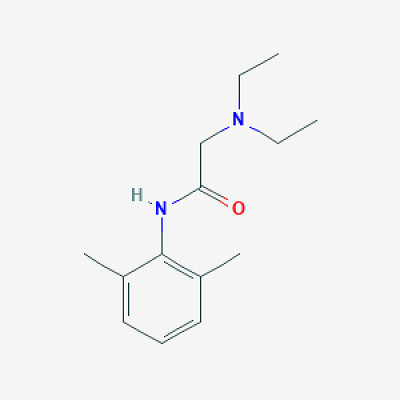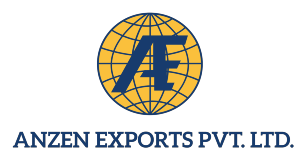Topical local anesthetics are applied on the skin for temporary numbness or to ease the superficial sensation of pain. Lidocaine ointment is an anesthetic drug prescribed during certain medical procedures or to treat minor pains and skin conditions. The active pharmaceutical ingredient used in the preparation of this ointment is Lidocaine that is an aesthetic of the amide group. It works in the infiltration technique by peripheral nerve blocking. (1)

Chemical Formula – C14H22N2O
Weight – 234.3373 g/mol

Table of Contents
Precise Uses
Lidocaine is used to feel relief from:
- Skin conditions like itching, insect bites, minor burn, scrapes, eczema.
- Minor discomfort caused by hemorrhoids, pain or itching around the genital area.
- Medical procedures like Sigmoidoscopy, Cystoscopy. (2)
Consult your doctor before using this medicine. The dosage canbe determined based on the respective medical condition. 2 to 3 times usage can be an ideal one. It is advisable not to use often or for prolonged tenure. After using, if the condition worsens or any medical problem surfaces, then consult a doctor immediately.
How to Apply?
Before using read the direction of how to use Lidocaine mentioned on the package of the product. (3)
Dos:
- At first clean and dry the area on the skin where you want to apply it.
- Apply a thin layer of ointment to the affected area. If you are using a spray, then shake the canister and hold it 3-5 inches away from the area and apply until wet. If you want to apply the spray on the face, then take it in the hand and then apply it to the affected area.
Don’ts
- The medicine must not enter the nose, eyes, and mouth as it is for external use only. In case it enters these areas, rinse with clean water immediately.
- Avoid using on a large area of your body.
- Don’t cover with bandage, plastic, or apply heat unless directed by a doctor, as this can increase the risk of side effects.
- Don’t use it on any sore or infected area.
Mechanism of Action
The Lidocaine action takes place by temporarily blocking the nerve impulses from reaching the brain. After application on the affected area, it stabilizes the neuronal membrane by inhibiting the potassium and sodium fluxes. The ionic influx of potassium or sodium is responsible for the initiation and conduction of impulse to the brain. When it is applied tothe skin, the medicine gets absorbed and directly works on the sodium ion channel present on the internal surface of the cell membrane of the nerves.
Neutrally uncharged Lidocaine molecules get diffused through neural sheaths present in the axoplasm. Here, these molecules are ionized or converted by reacting with hydrogen ions. The resultant ions now reversibly bind with sodium channels and lock itby the effect of depolarization. Depolarization means the shift in electric charge distribution due to low negative charge inside the cell.
For depolarization, a sufficient blockage of sodium takes place in the postsynaptic neuron of the membrane, which ceases the action of potential transmission in the brain. Hence, lidocaine structure not only prevents pain signals to propagate to the brain,but also aborts it from getting generated. (3)
Side Effects
Lidocaine injection, ointment or spray sometimes affects the Central Nervous System and the Cardiovascular System. It affects the myocardium of the cardiovascular system, which decreases electrical excitability, rate of conduction, and force of contraction. It sometimes also causes depression.
The misuse or overuse can be poisonous to health. If it is consumed through the mouth, then it may numb the tongue, throat and choke the digestive tract. On ingestion, it may affect vital organs. It may also lead to methemoglobinemia, where the ability of red blood cells to carry oxygen to the tissues gets altered.
Active Pharmaceutical Ingredient (API), the Key Ingredient of Medicine
The medicine, which we consume is the finished product made out of the composition of active and non-active pharmaceutical ingredients. The API is the portion of the chemical compound used in a drug, which has pharmacological or therapeutic effects on the body to fight with the disease. The inactive components are a non-medicinal part.
Hence the quality of API is a major factor to ensure the best quality medicine. India is the sixth largest producer of medicines and exporter of API. Anzen Exports is one of the leading API exporters in India catering to 70 counties across the world for the last 29 years. It has a network of the best Indian API manufacturers from where they procure API of exclusive quality and export it to over 611 companies in the international market. With a highly experienced team and dedicated service they have secured many awards and applause.
Points to Remember
Medicines are aimed to give the fastest relief. However, self-medication is not advisable. Take your physicians advice before taking any medicine. Pain in a body part or fever are symptoms of a vital ailment, which needs medical care. Hence, painkillers or local anesthetics for pain relief are not a permanent solution.
For more informationon API or medicine (finished products)you may connect with Anzen Exports over our online chat support or email. You may leave your comment in the “Leave a Reply” section below this blog to share your experience with us.
Disclaimer:
Anzen Exports’ blog posts are based just on our research from cited websites. To be best informed, we advise consulting a doctor about an ingredient or medicine prior to taking it.
Sources:
1) Drug Bank
Website – https://go.drugbank.com/drugs/DB00281
2) WebMD
Website – https://www.webmd.com/drugs/2/drug-8532-9170/lidocaine-topical/lidocaine-topical/details
3) WebMD
Website – https://www.webmd.com/drugs/2/drug-8532-9170/lidocaine-topical/lidocaine-topical/details
4) Drug Bank
Website – https://go.drugbank.com/drugs/DB00281
